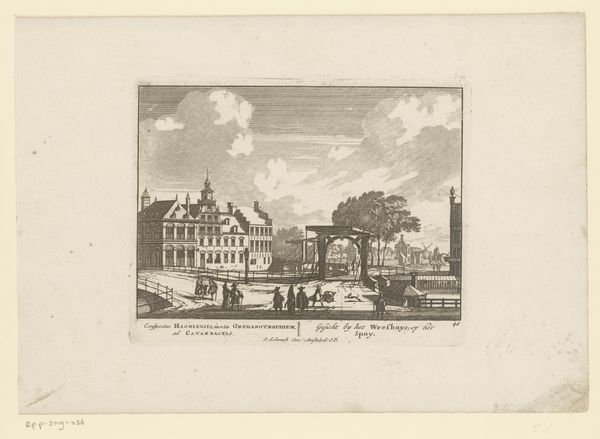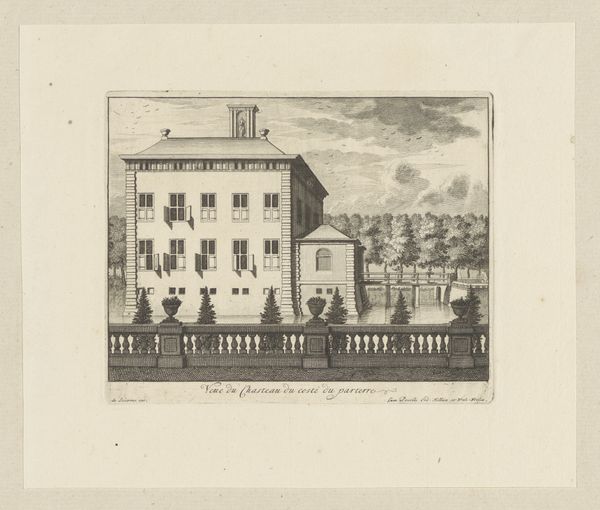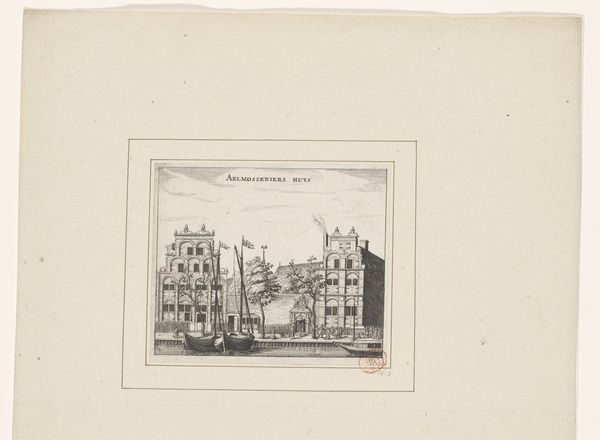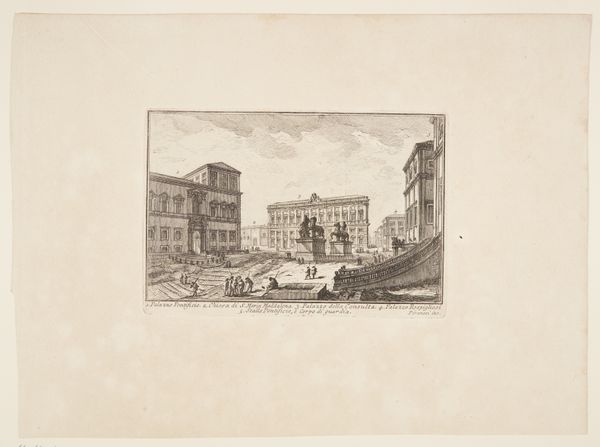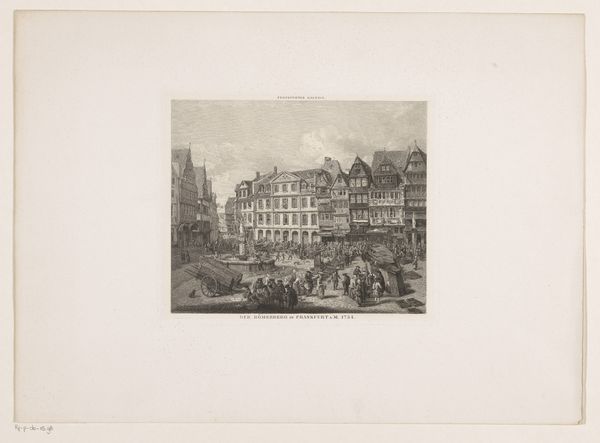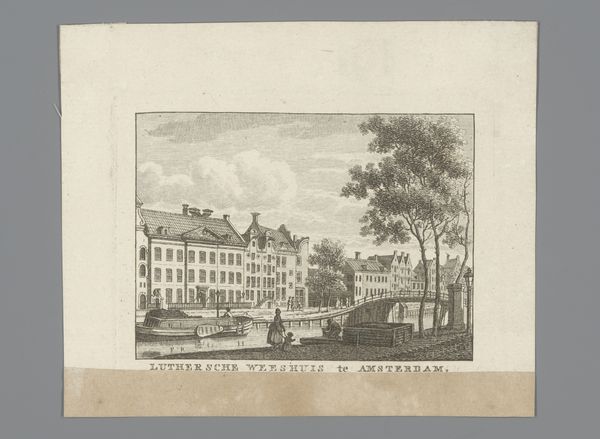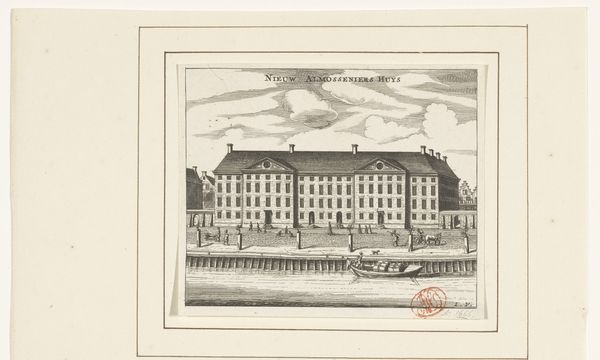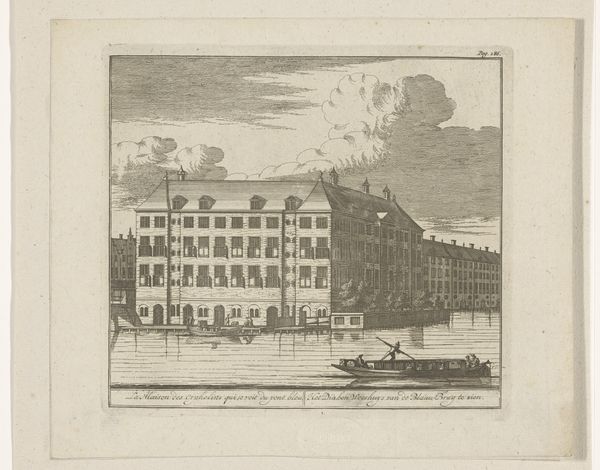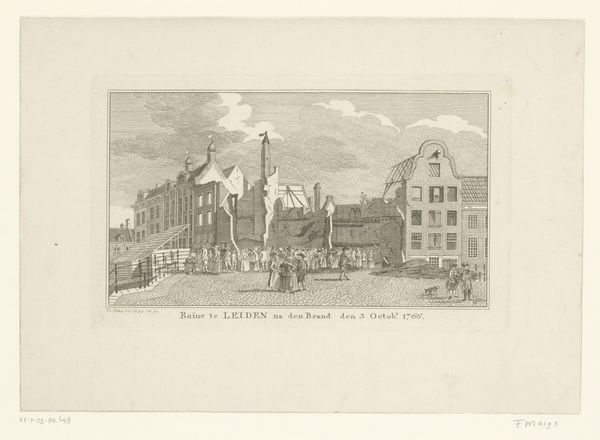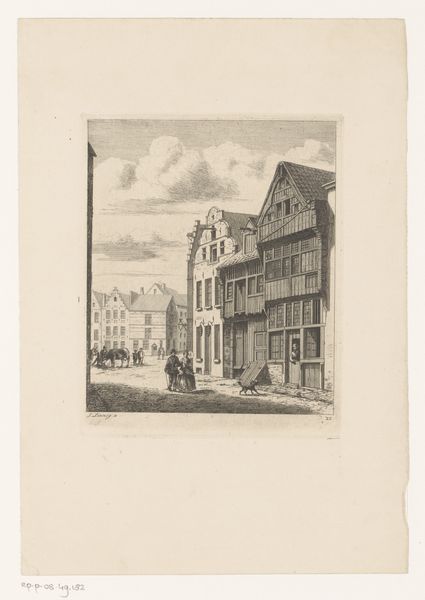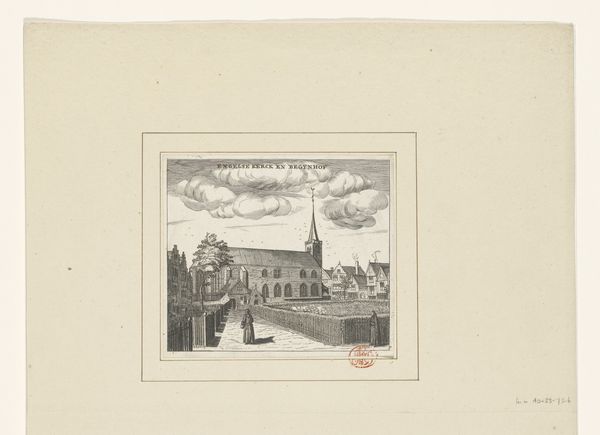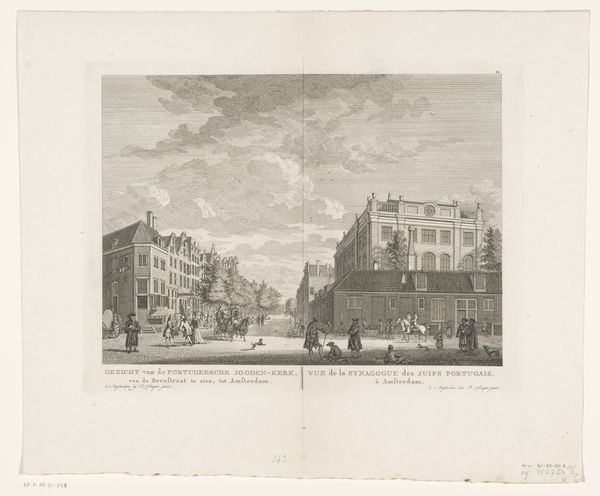
drawing, print, engraving
#
drawing
#
baroque
# print
#
old engraving style
#
landscape
#
cityscape
#
engraving
Dimensions: height 132 mm, width 169 mm
Copyright: Rijks Museum: Open Domain
Curator: Let's examine this cityscape depicting the Corvershof in Amsterdam, crafted sometime between 1713 and 1751 by an anonymous artist. It’s an engraving, offering a meticulous rendering of the building and its surroundings. What strikes you immediately about it? Editor: It’s incredibly detailed for an engraving! The textures—the water, the brick, the trees—they all have a distinct, almost tangible quality. And the composition seems carefully designed to showcase the labor involved in city life, not just the building itself. Curator: Precisely. The Corvershof itself was an important institution. It was a hofje, a type of almshouse providing housing for elderly women. The engraving gives us insight into the social structures of the time, visualizing charitable initiatives and community support. The visual rhetoric promotes public confidence and civic pride. Editor: You can also see it in how the surrounding area is bustling. The detail put into the boat being rowed—likely bringing goods or materials—highlights the constant industry that sustained Amsterdam. This wasn't just about housing the elderly; it was about the materials, labor, and circulation of goods required for such a place to exist. Curator: It is interesting how the structure itself seems slightly removed from its function in the artist's composition. It certainly focuses on accessibility and location. Think about the conscious presentation of such a building at a time when cities were centers of trade, immigration, and rapid population expansion, they really wanted the community's services to be open. Editor: Yes, and that ornate façade suggests this wasn’t merely functional housing. It speaks to a deliberate aesthetic choice, signifying status and projecting an image of prosperity. This detail of "luxury" could act as another symbol of community and service. Even the method in its execution is meant to impress a sophisticated image to the piece. Curator: Absolutely. These engravings, reproduced and distributed, served to solidify certain civic ideals and visually reinforce societal values concerning charity and public welfare. Editor: It makes me wonder who exactly commissioned this piece. To whom was it originally presented, and what material relationships fueled it? Its meaning is built into both the subject and method. Curator: Those are important questions. This engraving provides a small window into the past. There are always more pieces to the story! Editor: Indeed, examining the layers of intention, technique, and labor offers a more thorough appreciation of this work.
Comments
No comments
Be the first to comment and join the conversation on the ultimate creative platform.

